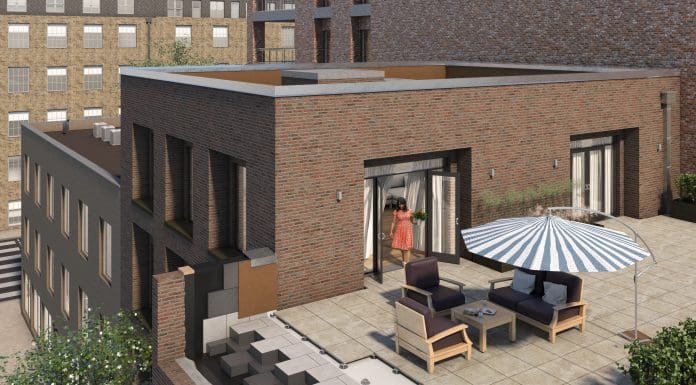Achieving optimal performance for flat roofs involves several critical factors including thermal efficiency, waterproofing, drainage, fire safety and loadbearing capacity
Comparing inverted roofs with warm roofs:
Waterproofing position: An inverted roof is a type of flat roof construction where the thermal insulation sits above the waterproofing layer (unlike conventional warm roofs, where insulation is placed below the waterproofing layer). Here, the waterproofing membrane is directly applied over the structural deck, also acting as a vapour control layer (VCL).
Installation method: Unlike warm roofs, inverted roofs use loose-laid insulation and therefore finishes/loads on top are required to prevent wind uplift.
Insulation challenges: Inverted roof insulation faces moisture exposure and varying loads, requiring water-resistant and robust materials.
Rainwater management: In inverted roof applications, a Water Flow Reducing Layer (WFRL) is installed over the thermal insulation to reduce the rainwater ingress.
Choosing the right insulation material is crucial for long-term durability and compliance with building regulations.
Enhanced fire safety in inverted roofs
FOAMGLAS® inverted roof insulation is non-combustible and suitable for terraces, podiums, green roofs and more.
FOAMGLAS® INVATHERM, as part of the inverted roof system, consists of cellular glass with a pre-applied inorganic coating on the upper surface. Both the core material and the coating have an A1 fire reaction classification, making them fire-resistant. The insulation does not burn, distort, produce flaming droplets or contribute to smoke production.
Thermal performance
FOAMGLAS® INVATHERM offers exceptional thermal conductivity, with a design lambda value of 0.038 W/mK. Its closed-cell structure ensures superior insulation properties, contributing to energy efficiency and reducing heating and cooling costs.
Moisture resistance
FOAMGLAS® insulation has a closed-cell structure that makes it highly resistant to moisture ingress. The inorganic top coating of FOAMGLAS® INVATHERM protects the exposed top cells of the insulation providing a watertight insulation. This exceptional performance ensures protection against moisture ingress.
Compressive strength
FOAMGLAS® INVATHERM, boasts a remarkable compressive strength exceeding 400 kPa, without compression or deformation. This makes it an outstanding option for supporting heavy loads and maintaining structural integrity. Whether it’s pedestrian traffic on podium roofs or the weight of surface finishes, FOAMGLAS® material’s closed cell structure and rigidity is designed for strength and durability.
Elephant & Castle town centre project
Elephant and Castle Town Centre
A mixed-use development in London, Elephant & Castle town centre is a vibrant urban hub blending housing, retail and cultural spaces.
Meticulously designed podium roofs feature non-combustible FOAMGLAS® insulation in an inverted roof system, covering an impressive 2,200 sqm.
These roofing solutions integrate functionality and fire-resistant materials, making them an excellent choice for contemporary urban environments.
Covered with both FOAMGLAS® INVATHERM and FOAMGLAS® T3+ insulation, these podium roofs exemplify the project’s core values: safety, durability and energy efficiency.
The choice of these non-combustible insulation materials enhances safety and exceptional compressive strength for pedestrian loads.
Prioritising safety with FOAMGLAS® insulation
The decision to use FOAMGLAS® insulation was driven by the critical need for fire resistant products in high-rise buildings. As a non-combustible material, FOAMGLAS® INVATHERM provides an outstanding layer of protection against fire hazards.
Its inherent resistance to flames and Euroclass A1 rating ensures it does not contribute to fire spread.
“Choosing the right insulation material is crucial for long-term durability and compliance with building regulations.”
Investing in the future
FOAMGLAS® inverted roof insulation offers a smart solution while contributing to the long-term performance of the roof. This insulation material is made of cellular glass and contains graded recycled glass.
By incorporating recycled materials, it reduces environmental impact and contributes to a circular economy.
By choosing a FOAMGLAS® solution, you not only create durable roofs that help protect your buildings but also aspire for a more sustainable future.
For more details, the corresponding white paper can be downloaded on the FOAMGLAS® website.
*Please note that this is a commercial profile.
The post Cellular glass insulation for inverted roofs appeared first on Planning, Building & Construction Today.


